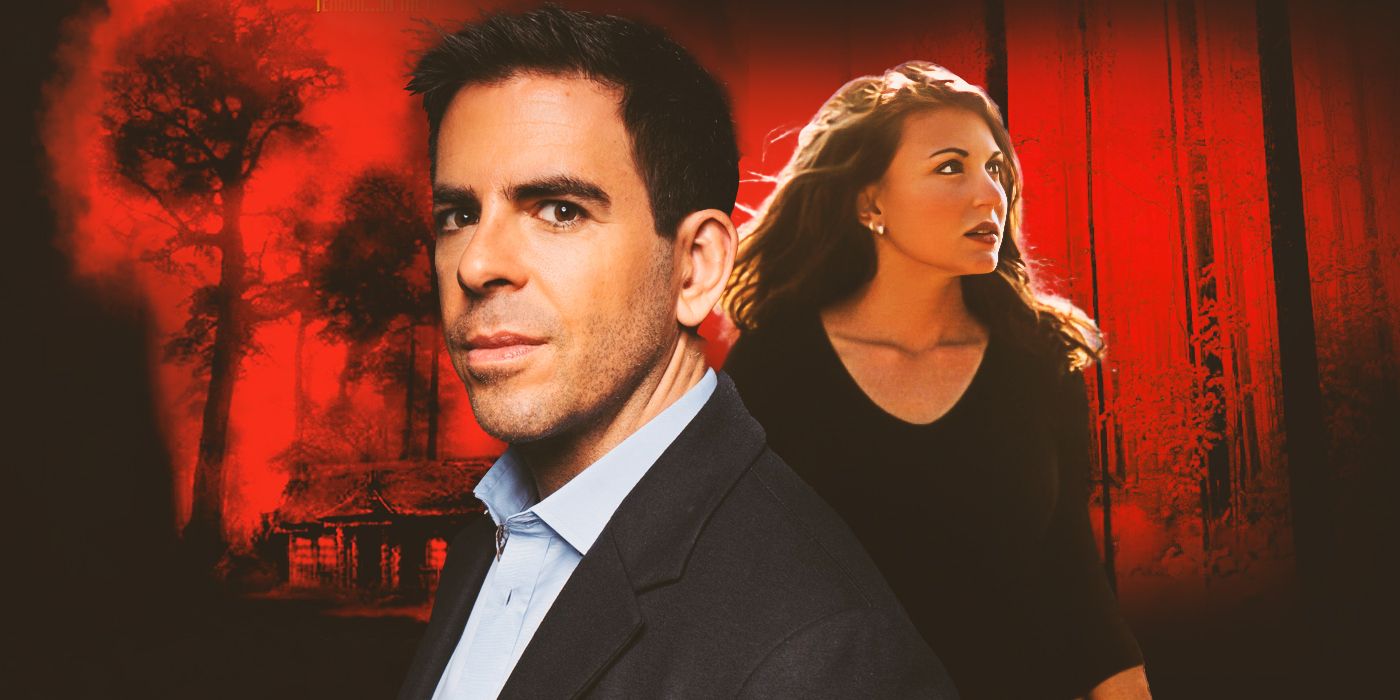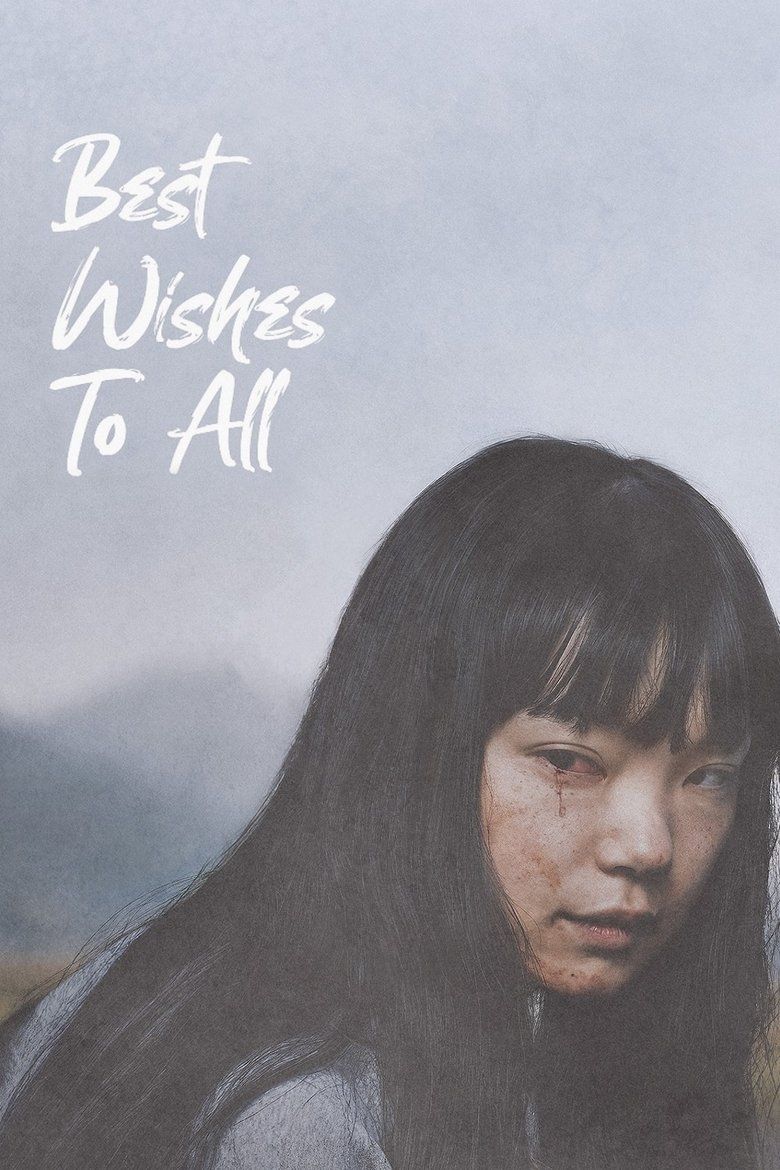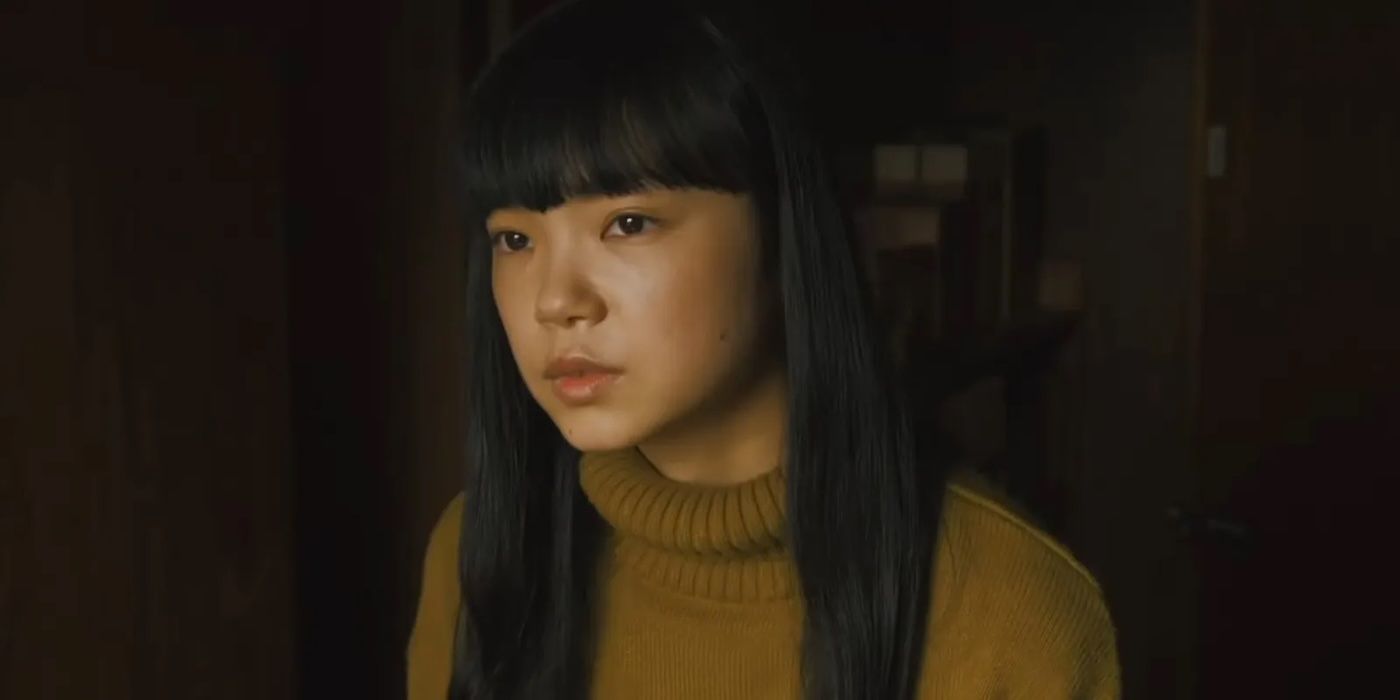What is the cost of “being happy” today? This seemingly simple question has many layers; from clothing purchases funding toxic sweatshops to every cup of coffee endorsing harmful harvesting practices, people are constantly discovering that even the smallest sources of joy are often accompanied by great sadness being inflicted upon others. This can not only make it hard to be happy but render many kinds of comfort inherently unethical, a moral dilemma that is portrayed to disturbing perfection in Yûta Shimotsu‘s Best Wishes to All. Streaming on Shudder, it follows a young woman as she visits her strange grandparents and learns about their grisly “happiness ritual.” The film is not only a masterclass in fusing different types of horror, but is also a poignant dissection of what true joy looks like in the modern world. It thoroughly unnerves watchers not just with the horrors on display but also by confronting them with how easy it is to ignore the suffering of others, especially when that ignorance makes it so much easier to be happy themselves. It’s a mind-bending, thought-provoking kind of scary movie, and it’s no wonder that it won “Scariest Feature” at the legendary Overlook Film Festival.
You’re Not Ready for the Psychological and Body Horror of ‘Best Wishes to All’
Few films manage to be as endlessly unnerving as Best Wishes to All. Following a young nurse-in-training (Kotone Furukawa) — the characters are never given names — as she goes to visit her grandparents, the movie immediately starts with a sense of dread that only grows throughout its hour-and-a-half runtime. Uneased by her grandparents’ creepy behavior and the closed door she swears she can hear noises coming from, our protagonist eventually learns the truth: their family, as well as every other in their community, keeps a tortured prisoner locked up in their house. They believe that happiness is a finite resource, and that only by keeping a person in constant torture can they maintain the endless happiness our main character was lucky to grow up in.
Best Wishes to All received the “Scariest Feature” award at the Overlook Film Festival, an annual honoring of the best projects this genre has to offer. And anyone who’s seen the film can clearly see why; the early reveal of this “happiness ritual” only escalates the psychological fear our main character (and the audience) had already been enduring. The film’s creepiness starts off in relatively small ways, with the young woman stumbling on her grandparents standing dead-still in a corner, or these elders trying to show love to their granddaughter by trying to make her poke their eyes out.
It establishes a psychological baseline, getting viewers accustomed to that type of fear before overwhelming them with sickeningly effective body horror. From getting a close-up look at someone trying to sew their own eyes shut to a truly shocking axe-swinging “accident,” Best Wishes to All proves quickly to be as adept at shocking watchers with gore as it is at disturbing them with uneasy dread. It oscillates wildly between residual psychological terror and shocking carnage, a seamless merging that not only leaves viewers unsettled but, somehow, creates the perfect platform for Best Wishes to All’s core horror: your happiness is another person’s suffering.
‘Best Wishes to All’ Shows the Cost of Happiness
Articulated perfectly in thoughtful projects like The Good Place, Best Wishes to All spotlights how unfortunately easy it is to perpetuate harmful systems today. When so much of the global economy relies on some class of people being forced to work in terrible conditions, there are almost too many atrocities going on in the world for folks to remember… so isn’t it just easier to forget about all of it? This is a mentality that many real individuals have gladly adopted, and that Best Wishes to All calls out through its horror. By creating this terrifying ritual of making one person suffer to ensure another group’s happiness, the movie creates a twisted, chillingly resonant portrayal of the way people ignore the victims of their actions.

Related
This Disturbing Body Horror Moment From Eli Roth Was Based on a Real Life Incident
The director faced his own flesh-eating virus.
Obviously, this is stretched to horrific levels, but it is still an unnerving confrontation, one that makes viewers consider just how much harm they’re inflicting so they can hoard happiness without thought of others. It’s an overwhelmingly saddening topic that is captured perfectly through the steady mental breakdown of the film’s protagonist. Yet, somehow, Best Wishes to All still manages to carry hope. Because, through a pair of purposefully mirrored scenes, it clarifies that viewers may not be able to stop the global unhappiness happening across the world, but they can work to share the happiness they have with those around them today.
‘Best Wishes to All’ Manages to Bring Hope Admist the Horror
Even without any of its insightful messaging, Best Wishes to All would still be one of the most skillful scary movies of the decade. Its handle on all kinds of horror is a true innovation of the genre, uneasing viewers psychologically, only to shock them with surprise gore to create an uncannily perfect formula for terror. This alone would have been enough to warrant “Scariest Feature” at the Overlook Film Festival, and its core themes are what Best Wishes to All one of the most poignant films out today. The film’s message about happiness and the harm we inflict on people all over the world is something that far too many people in real life willfully forget. Through its scares, it not only reminds us all to remember this fact, but it leaves audiences with a message that people overwhelmed by the horrors of this world need to remember: you can’t control everything bad that happens. But by focusing less on how to make yourself happy and more on how to help others, you’ll be making things better for us all.

- Release Date
-
January 12, 2024
- Runtime
-
84 minutes
- Director
-
Yuta Shimotsu
-

Masashi Arifuku
Grandfather
-

Yoshiko Inuyama
Grandmother
-

-





